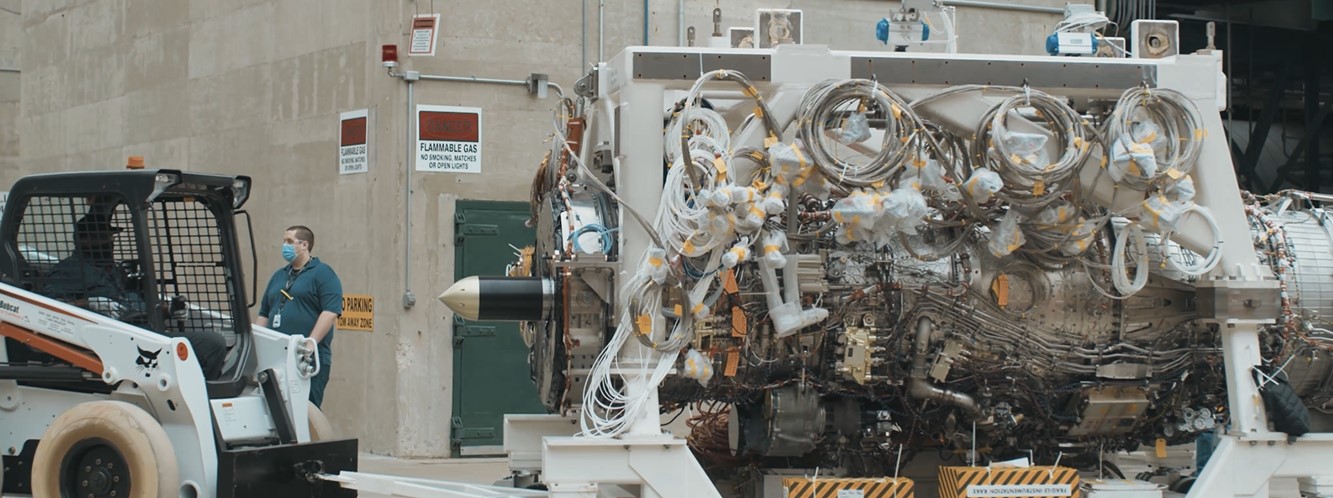- Joined
- 19 July 2016
- Messages
- 4,279
- Reaction score
- 3,463
Perhaps an A with the big wing.
The Finnish Minister of Defence has stated that the results of the Air Force evaluation are in....
Wonder how the Finn fighter competition is going to pan out....
Anyone know off hand when Ottawa will make a decision and will it before Santa kicks in?
Cheers
To be clear, the F-35C has essentially the same if not slightly greater range than the F-35A (it does carry slightly more fuel). That said, such numbers are dependent upon the exact profile flown and also become a moot point when considering AAR.The F-35C has an almost equal range to the F-35A
Go for a new variant means much greater costPerhaps an A with the big wing.
And in Canada's case the alternative is what? It's not like they are going to develop a home grown fighter.Try to remember that buying foreign-built weapons is frightfully expensive for any nation.
And did anyone declare otherwise? The point is that the jobs aspect is something that decision makers will factor in even if it is less overtly discussed.Industrial offsets are more about "buying votes at home" than their impact on the total cost of a program.
The Royal Canadian Navy scrapped HMCS Bonaventure during the late 1960s. While the RCN had tried to maintain a fighter wing: with Sea Fires, Sea Furies and MD Banshees, a fighter proved too expensive.does Canada have any desire to return to carriers or LPD/LHDs with an airwing? I dont think they had a sea based air wing since the late 60s or early 70s
How will sticking the C variant wing on the A variant or lightening the C variant be hugely expensive?Go for a new variant means much greater costPerhaps an A with the big wing.
Any change to anything would be massively expensive.You are kidding me aren't you? Any new development, regardless of how seemingly minor, will drive additional costs since it will be a unique model.
To be clear, the F-35C has essentially the same if not slightly greater range than the F-35A (it does carry slightly more fuel). That said, such numbers are dependent upon the exact profile flown and also become a moot point when considering AAR.The F-35C has an almost equal range to the F-35A

And how often would Canada use that? For that matter how often does Sweden? If one really wanted the away from fixed base capability, just add some F-35Bs...the ability to operate off main roads in Sweden is also a nice factor.
This will largely come down to industrial benefits and commonality with key allies. In this situation the F-35 wins hands down on both. Moreover, given Canada is already a partner in the F-35 program it would be silly for them to give up those benefits and the money already spent.
I've been wondering.....Rumor mill just now from local press suggests Finland has picked the F-35…
By chance today is their national holiday as it’s their Independence Day…
cheers
While I suspect the F-35 is the obvious winner, let's wait for official word on the matter.Just a few days ago, the choice was supposed to very hush hush, until officially released - and any leak would be considered a criminal act. Now we have a newspaper getting "confirmation from a number of sources".
Aside from being single engine, these aircraft are absurdly different, shocking a competition comes down to such divergent competitors.
It really smells "ridiculous second option which is there to never be chosen".That said, I suspect they'll go with the F-35... I'm just a bit surprised that we even dared to thumb our noses by having what almost appears to be a fair competition.
Funny how the Canadians went for the F/A-18 (over the AV8B presumably) and survived with it for all these decades and yet now somehow there is a perceived need by some for operating away from major bases...More seriously though - being able to operate off of short runways in Northern Canada would be very useful for being able to patrol the high arctic. Forward air refuelling points without the full facilities of an airfield... it would make up for the 'short legs' of all of the aircraft being offered.
| F/A-18A (CF-18) | F-35A |
|
|
buying the Gripen would send a signal that we're aligned with European NATO powers, not just axillaries for the U.S. within NATO... it'd send a diplomatic message.
| European NATO Operators of F-35 | European NATO Operators of JAS-39 |
|
|
| TOTAL: 419 not including US or other | TOTAL: 28 |

You were the one who stated that "buying the Gripen would send a signal that we're aligned with European NATO powers". I just pointed out the fact that few European NATO powers use the Gripen in any form and in fact that many more use/plan to use the F-35 thus a f-35 buy would arguably be seen as aligning more.Honestly, the fact that most European NATO countries use the F-35 is pretty immaterial - the fact is that domestically (and perhaps internationally) going with a Euro-Canard would be seen as moving Canada closer to Europe - the fact that it'd be buying them from a non-aligned non-NATO country also probably doesn't matter.
You were the one who stated that "buying the Gripen would send a signal that we're aligned with European NATO powers". I just pointed out the fact that few European NATO powers use the Gripen in any form and in fact that many more use/plan to use the F-35 thus a f-35 buy would arguably be seen as aligning more.Honestly, the fact that most European NATO countries use the F-35 is pretty immaterial - the fact is that domestically (and perhaps internationally) going with a Euro-Canard would be seen as moving Canada closer to Europe - the fact that it'd be buying them from a non-aligned non-NATO country also probably doesn't matter.
Soon to be resolved with T-7alleviating also the need for a LIFT aircraft such as are facing the USAF.
You seem to be oblivious to the huge aggressive country that isn't too far from our northern shore --- and a direction that has long been identified as the route it would take in an attack, the shortest distance ---Aside from being single engine, these aircraft are absurdly different, shocking a competition comes down to such divergent competitors.
We're a small country (~1/10th the population of the United States) with no nearby rivals (excluding the United States and the occasional illegal trawler) to motivate defence spending... fighter aircraft exist for Canada to 'do its part' in NATO rather than serve a domestic requirement (other than a nominal anti-shipping capability to defend Canadian territorial waters).
(1)That country is actually quite far. Far enough that choice of tactical fighter isn't hugely important, at least, not from this perspective.You seem to be oblivious to the huge aggressive country that isn't too far from our northern shore --- and a direction that has long been identified as the route it would take in an attack, the shortest distance ---Aside from being single engine, these aircraft are absurdly different, shocking a competition comes down to such divergent competitors.
We're a small country (~1/10th the population of the United States) with no nearby rivals (excluding the United States and the occasional illegal trawler) to motivate defence spending... fighter aircraft exist for Canada to 'do its part' in NATO rather than serve a domestic requirement (other than a nominal anti-shipping capability to defend Canadian territorial waters).
would it be easier to station local people there who are used to those long winters.. say locals of Nunavut?Ottawa is not in the habit of making quick decisions when it come sot weapons. They just spent a few billion dollars to update the CF-18A fleet for the next decade.
As for why Ottawa is finally talking about fighters with enough range to defend our high arctic ... with global warming and arctic ice melting, the Northwest Passage will soon be navigable for ships from dozens of countries.
Heck! Even Communist China claims "observer" status to Artic conferences.
The difficult part of defending Canada's high arctic is stationing white men (European ancestry) in the high arctic. Few white men enjoy those long winter nights. Also supplying them with be prohibitively expensive.
Hint: I spent a summer at CFS Alert ... doing construction work.
Too bad Su-57 is off the table. That would be just about ideal for Canada's situation. Range, two engines, arctic conditions, and it sure would annoy the southern neighbors if you think that's a priority.P.S. Regarding the 'long-legs' - I never said that the CF-18/CF-188 was particularly well suited - although the carrier landing equipment was very useful up North. If Canada was large enough in population to develop our own interceptor it'd fall more in the Su-27/Mig-31 category - our requirements are more like those of the Russians due to geography. Maybe our traditional favouring of twin-engined designs and the PVO's favouring of twin engines isn't unrelated either? Have you tried walking home across the Canadian Shield let alone Muskeg?
